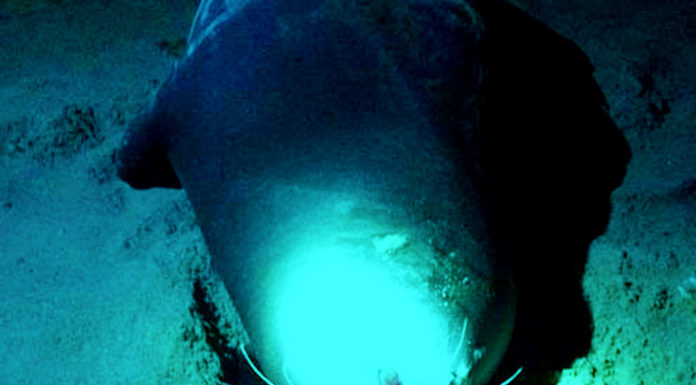Trên thế giới hiện nay, có rất dồi dào thực phẩm bày bán, giá tiền lại rất rẻ và người ta tự hỏi như vậy mình có cần đổ mồ hôi cày xới, tốn thì giờ, tiền bạc để trồng rau, trái tại vườn nhà nữa hay 0?
Bên cạnh những thực phẩm rẻ mà rất bắt mắt đó, thỉnh thoảng chúng ta cũng thấy những món BIO, trông nhỏ, xấu, đắt tiền mà tại sao chúng lại bán đắt thế?
Thưa, đó là công lao dân nhà nông chân chính đấy.
Những thức ăn này không bị xịt thuốc hoá học cho mau lớn, không bị bẻ sớm khi chưa chín, không bị ngâm thuốc cho đổi màu, hay không bị ngâm chất hoá học cho ngọt, cho giữ được lâu.
Chúng ta có quyền mua và tiêu dùng thực phẩm bằng đồng tiền mồ hôi, nước mắt thì chúng ta cũng có quyền biết chúng ta mua gì và ăn gì, tác hại của nó ra sao.
Tôi tìm được vidéo này trên net, gửi quý anh chị coi cho biết.
Nó là một phóng sự cho người Mỹ và Canada, nhưng cũng có thể xảy ra ở bất cứ nơi nào trên thế giới.
Chúng ta không là người bán hàng thì chúng ta không thể biết được nguồn gốc thực phẩm sau khi chúng được vào bao, vào hộp và làm tại đâu hay nhập từ nơi nào.
Rất may là có những người dám nói lên sự thật.
Cám ơn quý vị này và xin cầu chúc cho quý anh chị luôn được khỏe mạnh.
10 Foods Made in China You Must Avoid (Filled with Plastic, Pesticides and Cancer Causing Chemicals)
It has become a well-known fact that much of the food found in
America is imported from China. Why would one need to buy food from
China when we have so much farmland in America? It all has to do with
the price, food from China is cheaper, but it comes at a cost.
Below is a list of 10 foods from China we all should avoid!
1. Tilapia Fish
Wikipedia
80% of tilapia in America comes from China. The fish are bottom
feeders and will eat almost anything. With water pollution, the way it
is in China, eating anything raised in that water would be unsafe to say
the least. Plus, who knows what the fish are being fed. There is, also,
one
study that states tilapia is less healthy than bacon.
2. Cod Fish
50% of American Cod comes from China. Yet again this is a water
pollution and feeding issue. There are few restrictions in China for
these types of exports.
3. Apple Juice
About 50% of all apple juice sold in the US comes from China. China has been known to use
harmful pesticides
on their food. Even pesticides that have been banned by their own
government. Making apple juice at home from local organic apples is the
best method.
4. Processed Mushrooms
34% of all processed mushrooms come from China. Just as we saw with
apples, one does not know what the mushrooms are grown in and exactly
how healthy they are. Just to be on the safe side, buy mushrooms local
or from trusted American-based or Canadian-based farms.
5. Chinese Garlic
31% of garlic sold in America comes from China. Like with other grown
foods, the pesticides involved in the process (mainly methyl bromide)
are just not safe and should be avoided. You can find out how to spot
Chinese garlic here.
6. Chicken
In 2013, the US Department of Agriculture approved the sale of
chicken from China in the United States. As with fish (mentioned above)
this is a pollution and feeding issue. China is commonly plagued with
avian flu and other foodborne illnesses.
7. Plastic Rice
There are
reports
that China is now sending over rice that isn’t really rice. When
cooked, it stays hard. The rice may actually be made of potato and
resin. Essentially, plastic rice is on the market, and this may give the
GMO grain companies a run for their money.
8. Black Pepper Mud
One
vendor in China was caught selling mud as black pepper. Although this seems like a local issue, one must always verify quality.
9. Industrial Salt
Salt produced for
industrial purposes
is finding its way onto the tables of China. Therefore, any salt from
China in America may also contain industrial salt. Consuming this salt
may contribute to high blood pressure, hypertension, and the risk of
heart attack and stroke.
10. Green Peas
Fake green peas have been
found
in China. These fake peas were created with snow peas, soy beans, along
with green dye and sodium metabisulfite (a chemical that is used as the
bleach and as a preservative). This dye is banned from using on produce
because it may cause cancer, as well as inhibit the body’s natural
ability to absorb calcium. These green peas also didn’t soften when
boiled and the water turned an unnatural green color.
https://www.facebook.com/jerseydemic/videos/10154893949990681/
và đây là những gì trên FB viết commentaires, mời quý anh chị đọc thêm và suy ngẫm.
Pourquoi se limiter avec seulement 10 aliments provenant de la Chine ?
Pourquoi ne pas simplement cesser d'acheter tout et n'importe quoi fabriqué en Chine ?Voir l’original



































































































